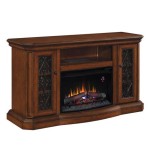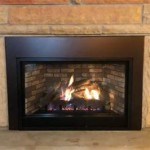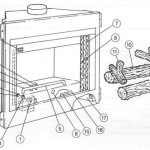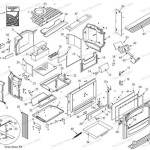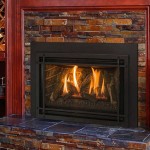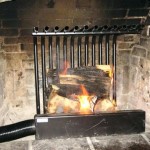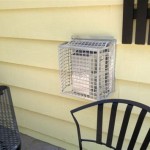Vermont Gas Fireplace Inserts: A Comprehensive Guide
Vermont, known for its picturesque landscapes and cold winters, frequently sees residents seeking efficient and aesthetically pleasing heating solutions. Gas fireplace inserts offer a practical and attractive alternative to traditional wood-burning fireplaces, providing supplemental heat and enhancing the ambiance of homes throughout the state. These inserts are designed to fit into existing fireplace openings, transforming inefficient, drafty fireplaces into sources of reliable warmth and visual appeal. This article explores the functionality, benefits, selection criteria, installation considerations, and maintenance aspects of gas fireplace inserts in Vermont.
Gas fireplace inserts operate by burning natural gas or propane to generate heat. A sealed combustion system draws outside air for combustion and vents exhaust gases directly outside the home, eliminating the need for a traditional chimney. This sealed system enhances safety and efficiency by preventing drafts and minimizing the risk of carbon monoxide poisoning. The inserts feature realistic-looking gas logs, often made of ceramic or refractory materials, designed to mimic the appearance of a wood-burning fire. The flame height and heat output can be adjusted using a remote control or thermostat, allowing users to customize the heating experience.
Within the Vermont market, a variety of gas fireplace insert models are available, catering to different heating needs and aesthetic preferences. Direct vent inserts are the most common type, utilizing a dual-pipe system to draw air from outside and expel exhaust fumes. Vent-free inserts, which do not require venting, are also available but are subject to more stringent safety regulations and may not be permitted in all areas due to concerns about indoor air quality. B-vent inserts utilize existing chimneys for venting, offering a more cost-effective option for homes with existing chimney infrastructure. Each type offers advantages and disadvantages regarding installation complexity, efficiency, and safety.
Key Point 1: Benefits of Gas Fireplace Inserts
Gas fireplace inserts provide a multitude of benefits compared to traditional wood-burning fireplaces, making them a popular choice for Vermont homeowners. One of the primary advantages is increased energy efficiency. Wood-burning fireplaces often lose significant amounts of heat up the chimney, while gas fireplace inserts, particularly direct vent models, are designed to minimize heat loss and maximize fuel utilization. The sealed combustion system and controlled burning process contribute to higher heating efficiency, translating into lower energy bills and reduced environmental impact.
Another significant benefit is convenience. Gas fireplace inserts eliminate the need for procuring, storing, and handling firewood. Starting and maintaining a fire is as simple as pressing a button on a remote control or adjusting a thermostat. This convenience is particularly appealing to individuals with busy lifestyles or those who prefer a hassle-free heating solution. The inserts also eliminate the mess associated with wood-burning fireplaces, such as ash and soot, reducing the need for frequent cleaning.
Safety is another critical advantage. Gas fireplace inserts are designed with safety features such as automatic shut-off valves and carbon monoxide detectors. The sealed combustion system minimizes the risk of carbon monoxide poisoning, and the controlled burning process reduces the risk of uncontrolled fires. Compared to wood-burning fireplaces, which can produce sparks and embers that pose a fire hazard, gas fireplace inserts offer a safer heating alternative.
Furthermore, gas fireplace inserts enhance the aesthetic appeal of homes. The realistic-looking gas logs and adjustable flame height create a warm and inviting ambiance. A wide variety of styles and finishes are available, allowing homeowners to choose an insert that complements their existing décor. Some models also feature decorative elements such as brick liners and accent lighting, further enhancing the visual appeal of the fireplace.
Finally, gas fireplace inserts can increase the value of a home. The improved energy efficiency, convenience, and safety features make them an attractive selling point for potential buyers. A well-maintained gas fireplace insert can add to the overall appeal and marketability of a property in Vermont.
Key Point 2: Selecting the Right Gas Fireplace Insert
Choosing the right gas fireplace insert requires careful consideration of several factors, including heating needs, fireplace dimensions, venting options, fuel type, and budget. Determining the appropriate heating capacity is essential for ensuring adequate warmth in the desired space. British Thermal Units (BTUs) measure the heat output of a gas fireplace insert. A larger room or a room with poor insulation will require an insert with a higher BTU rating. Consulting with a qualified heating professional can help determine the optimal BTU rating for a specific application.
Measuring the dimensions of the existing fireplace opening is crucial for selecting an insert that fits properly. The width, height, and depth of the firebox must be considered to ensure compatibility. Some inserts may require modifications to the fireplace opening, such as trimming or resizing, to achieve a proper fit. It is advisable to have a professional installer measure the fireplace opening to avoid any fitment issues.
The venting options available will also influence the selection process. Direct vent inserts require a dedicated venting system that extends through an exterior wall or roof. B-vent inserts utilize existing chimneys, but the chimney must be inspected and certified to ensure it is in good condition and compatible with the insert. Vent-free inserts do not require venting, but they are subject to more stringent regulations and may not be suitable for all homes. The choice of venting option will depend on the existing infrastructure and local building codes.
The choice between natural gas and propane will depend on the availability of gas lines and the cost of each fuel in the area. Natural gas is typically less expensive than propane, but it may not be available in all locations. Propane requires a separate tank and regular delivery, which can add to the overall cost. The decision should be based on a cost-benefit analysis that considers fuel prices, installation costs, and ongoing maintenance expenses.
Finally, the budget is an important consideration. Gas fireplace inserts range in price depending on the size, features, and brand. Installation costs can also vary depending on the complexity of the project. It is advisable to obtain multiple quotes from different installers and compare prices before making a decision. Consider any potential rebates or incentives offered by utility companies or government agencies, which can help offset the cost of the insert.
Key Point 3: Installation, Maintenance, and Safety
Proper installation of a gas fireplace insert is critical for ensuring safe and efficient operation. It is strongly recommended to hire a qualified and licensed installer to perform the installation. A professional installer will have the necessary knowledge and experience to ensure that the insert is properly connected to the gas line, vented correctly, and meets all applicable building codes. Improper installation can lead to gas leaks, carbon monoxide poisoning, and other safety hazards.
Regular maintenance is essential for keeping a gas fireplace insert in optimal condition. Annual inspections by a qualified technician are recommended to check for gas leaks, damaged components, and proper venting. The gas logs should be cleaned regularly to remove dust and soot, which can affect the flame appearance and heat output. The venting system should also be inspected and cleaned to ensure proper airflow.
Safety precautions should always be observed when operating a gas fireplace insert. Carbon monoxide detectors should be installed and tested regularly to ensure they are functioning properly. Never store flammable materials near the insert. Keep children and pets away from the hot surfaces of the insert. If you smell gas, immediately turn off the gas supply and contact a qualified technician. Never attempt to repair the insert yourself; always seek professional assistance.
Vermont building codes and regulations regarding gas fireplace inserts are in place to ensure safety and efficiency. These codes address issues such as venting requirements, gas line connections, and carbon monoxide detection. It is important to be aware of these codes and comply with them when installing and operating a gas fireplace insert. Local building inspectors can provide information on specific code requirements in the area.
Troubleshooting common issues with gas fireplace inserts can save time and money. Common problems include pilot light outages, flame irregularities, and thermostat malfunctions. If the pilot light goes out, follow the manufacturer's instructions for relighting it. If the flame is irregular, check the gas logs for proper placement and clean the burner ports. If the thermostat is not functioning properly, check the batteries or consult the owner's manual for troubleshooting tips. If you are unable to resolve the issue, contact a qualified technician.
In conclusion, gas fireplace inserts offer a practical, efficient, and aesthetically pleasing heating solution for Vermont residents. By understanding the benefits, selection criteria, installation considerations, and maintenance aspects of gas fireplace inserts, homeowners can make informed decisions and enjoy the warmth and ambiance of a gas fireplace safely and efficiently.

Vermont Castings Merrimack The Fireplace King Huntsville Ontario Muskoka For Your Heating Cooling And Grilling Needs

Vermont Castings Montpelier Ii Woodburning Fireplace Insert Fergus

Vermont Castings Montpelier Hearth S Great American Fireplace In Menomonie Wi

Victory Direct Vent Gas Insert By Vermont Castings

Vermont Castings Sequoia The Fireplace King Huntsville Ontario Muskoka For Your Heating Cooling And Grilling Needs

Vermont Castings Montpelier Ii Wood Insert Chadwicks S

Vermont Castings Fireplace Inserts For Beautiful Heat Woodstoves Patio

Vermont Castings Merrimack Non Catalytic Wood Burning Insert The Fireplace Club

Vermont Castings Montpelier Ii Wood Burning Insert Fireside Hearth And Leisure

Gas Fireplace Insert Propane Regency Vermont Castings Napoleon


